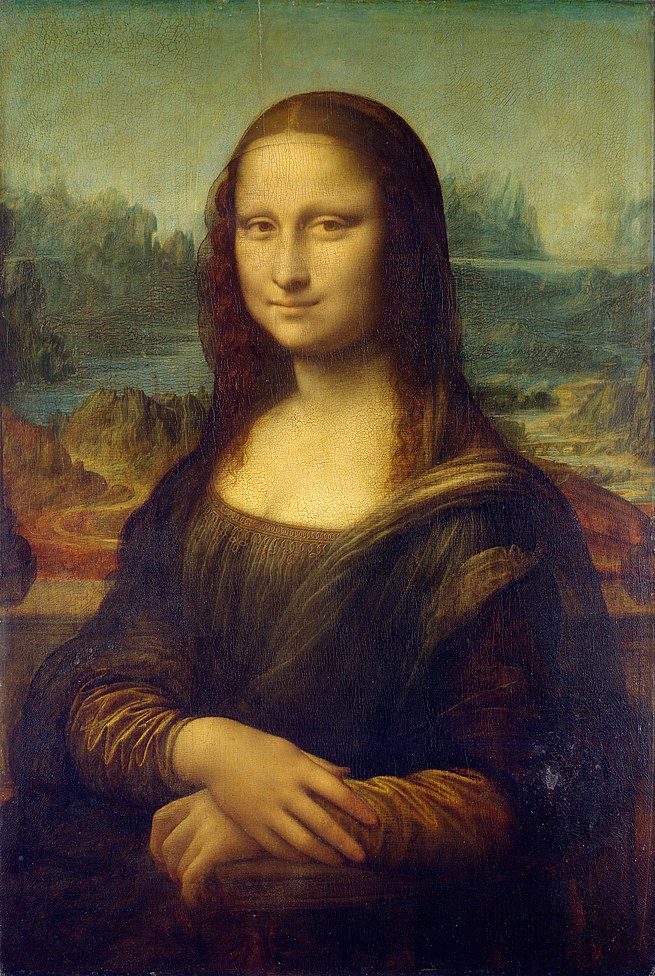
Main Difference
The main difference between Painting and Sculpture is that the Painting is a practice of applying paint, pigment, color or other medium to a surface and Sculpture is a branch of the visual arts that operates in three dimensions
-
Painting
Painting is the practice of applying paint, pigment, color or other medium to a solid surface (called the “matrix” or “support”). The medium is commonly applied to the base with a brush, but other implements, such as knives, sponges, and airbrushes, can be used. The final work is also called a painting.
Painting is an important form in the visual arts, bringing in elements such as drawing, gesture (as in gestural painting), composition, narration (as in narrative art), or abstraction (as in abstract art). Paintings can be naturalistic and representational (as in a still life or landscape painting), photographic, abstract, narrative, symbolistic (as in Symbolist art), emotive (as in Expressionism), or political in nature (as in Artivism).
A portion of the history of painting in both Eastern and Western art is dominated by religious art. Examples of this kind of painting range from artwork depicting mythological figures on pottery, to Biblical scenes Sistine Chapel ceiling, to scenes from the life of Buddha or other images of Eastern religious origin.
In art, the term painting describes both the act and the result of the action. The support for paintings includes such surfaces as walls, paper, canvas, wood, glass, lacquer, pottery, leaf, copper and concrete, and the painting may incorporate multiple other materials including sand, clay, paper, plaster, gold leaf, as well as objects.
-
Sculpture
Sculpture is the branch of the visual arts that operates in three dimensions. It is one of the plastic arts. Durable sculptural processes originally used carving (the removal of material) and modelling (the addition of material, as clay), in stone, metal, ceramics, wood and other materials but, since Modernism, there has been an almost complete freedom of materials and process. A wide variety of materials may be worked by removal such as carving, assembled by welding or modelling, or molded or cast.
Sculpture in stone survives far better than works of art in perishable materials, and often represents the majority of the surviving works (other than pottery) from ancient cultures, though conversely traditions of sculpture in wood may have vanished almost entirely. However, most ancient sculpture was brightly painted, and this has been lost.Sculpture has been central in religious devotion in many cultures, and until recent centuries large sculptures, too expensive for private individuals to create, were usually an expression of religion or politics. Those cultures whose sculptures have survived in quantities include the cultures of the ancient Mediterranean, India and China, as well as many in Central and South America and Africa.
The Western tradition of sculpture began in ancient Greece, and Greece is widely seen as producing great masterpieces in the classical period. During the Middle Ages, Gothic sculpture represented the agonies and passions of the Christian faith. The revival of classical models in the Renaissance produced famous sculptures such as Michelangelo’s David. Modernist sculpture moved away from traditional processes and the emphasis on the depiction of the human body, with the making of constructed sculpture, and the presentation of found objects as finished art works.
-
Painting (verb)
present participle of paint
-
Painting (noun)
An illustration or artwork done with the use of paint.
“The Mona Lisa is one of the most famous paintings.”
-
Painting (noun)
The action of applying paint to a surface.
“The outside of the old house would benefit from some painting.”
-
Painting (noun)
The same activity as an art form.
“Some artists, like Michelangelo, excel in both painting and sculpture.”
-
Sculpture (noun)
A three dimensional work of art created by shaping malleable objects and letting them harden or by chipping away pieces from a rock (sculpting).
-
Sculpture (noun)
Works of art created by sculpting, as a group.
-
Sculpture (noun)
The three-dimensional ornamentation on the outer surface of a shell
-
Sculpture (verb)
To fashion something into a three-dimensional figure.
-
Sculpture (verb)
To represent something in sculpture.
-
Sculpture (verb)
To change the shape of a land feature by erosion etc.
